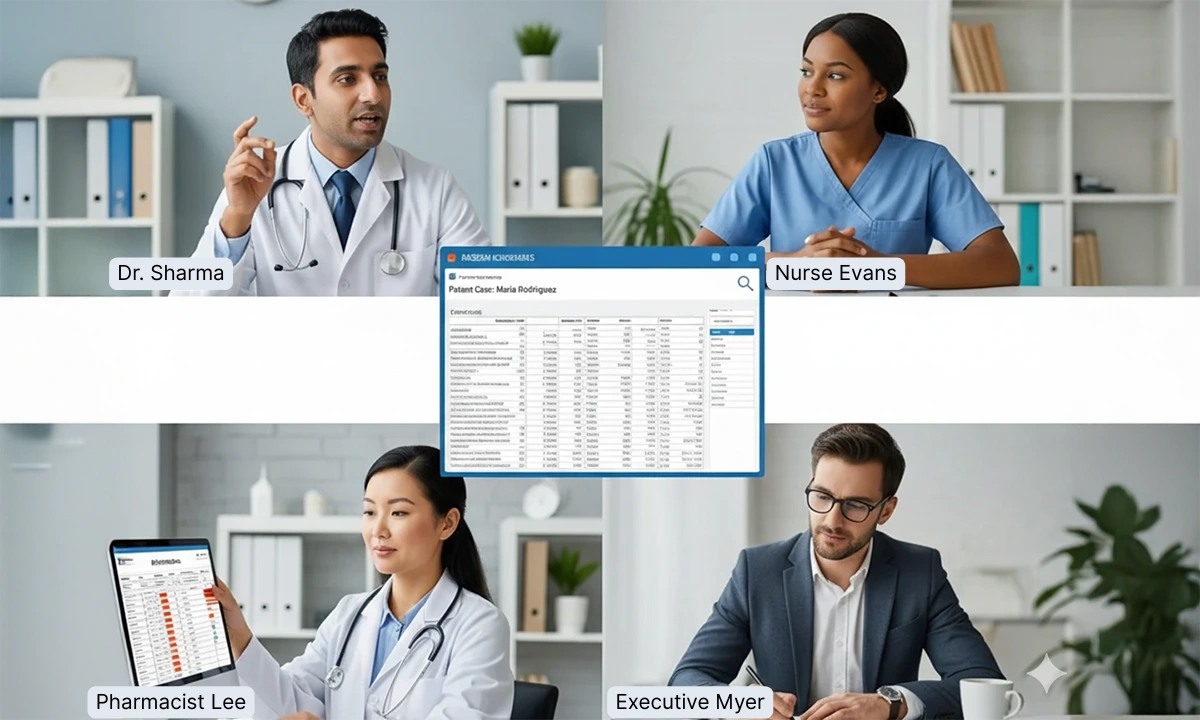What is Interprofessional Consults (IPC)?
Interprofessional Consults (IPC) are asynchronous, clinician-to-clinician exchanges—typically via phone, EHR, or secure digital platforms—where a treating provider seeks expert input from a specialist without the patient being present. These consults enhance care coordination, support clinical decision-making, and are billable under specific CPT codes (99446–99449, 99451, 99452), though they’re not classified as telehealth. CMS guidance allows Medicaid and Children’s Health Insurance Program (CHIP) reimbursement if the consultation directly benefits the patient, with informed consent documented, and both clinicians are enrolled in the patient’s state program. IPCs exemplify the shift toward intelligent, integrated collaboration in modern healthcare. Here are more details about how to stay compliant, bill correctly, and elevate collaborative care:
DO: Six Best Practices for Success and Compliance
1. DO obtain and document patient consent. For all interprofessional consults, the requesting provider must obtain verbal consent from the patient and document it in the medical record. This is a critical Medicare requirement.
Example: Dr. Smith tells his patient, “I’d like to send the details of your case and your EKG to a cardiologist for a quick opinion to ensure we’re on the right track. They won’t see you in person, but they’ll review your chart and send me a recommendation. Is that okay with you?” After the patient agrees, Dr. Smith adds a note to the chart: “Patient gave verbal consent for an interprofessional eConsult with cardiology.”
2. DO use a secure, HIPAA compliant platform. Interprofessional consults should only be conducted through your EHR’s secure messaging system or a dedicated platform, such as ClinicianCore. This protects patient information and creates a clear audit trail.
Example: A PA uses their health system’s integrated eConsult platform to send a request. This is secure and appropriate. Sending the same information via a personal Gmail account would be a HIPAA violation.
3. DO be specific and concise. The requesting provider should frame a clear, focused clinical question. Provide all necessary data upfront (e.g., relevant history, images, lab results) to avoid back-and-forth communication and allow the consultant to provide a high-quality answer.
Bad Example: “Patient has chest pain. Please advise.”
Good Example: “62 y/o male with history of HTN presents with 3 days of intermittent, substernal chest pressure, non-exertional. The EKG attached shows new T-wave inversions in lateral leads. Troponin is negative. Clinical question: Do you recommend starting a beta-blocker while awaiting outpatient stress testing?”
4. DO track and document your time accurately. Since most of these codes are time-based, you must document the cumulative time you spent on the consult.
Example: A consulting nephrologist reviews a patient’s labs and the PCP’s question about managing stage 3 CKD. After reviewing the chart and typing her response, she adds to her note: “Total cumulative time spent on consultative review and written report: 12 minutes.” This justifies billing CPT 99447 (11-20 minutes).
5. DO provide a formal written report. The consulting provider must send a written report of their findings and recommendations back to the requesting provider. This report is essential for documentation and billing.
Example: A dermatologist’s written report states, “Based on the image and history, this rash is consistent with nummular eczema. I recommend starting triamcinolone 0.1% ointment BID. If no improvement in 2 weeks, refer for in-person biopsy.” This is a complete report. A simple text message saying “looks like eczema” is not sufficient.
6. DO know your role. Understand whether you are billing as the “requesting/treating” provider or the “consulting” provider. The codes and requirements are different for each role.
Example: In a single eConsult, PA Maria (the requestor) spends 20 minutes preparing the case. Her clinic bills CPT 99452. The specialist, Dr. Lee, spends 15 minutes reviewing and responding. His practice bills CPT 99447. They cannot both bill the same code.
More Coding Specific Details: Interprofessional Consults
DON’T: Six Common Pitfalls to Avoid
7. DON’T bill the interprofessional consults if you subsequently see the patient for the same issue. This is a critical rule for the consulting physician. If your review of the eConsult leads you to decide to see the patient for the same problem, you cannot bill for the eConsult. The work is considered part of the subsequent E/M visit.
Example: An endocrinologist receives an eConsult about a patient’s thyroid nodule. After reviewing the ultrasound report, she writes back, “The features are suspicious. I need to see this patient in my clinic next week for a physical exam and to discuss biopsy options.” She cannot bill for the eConsult because it directly resulted in a scheduled appointment for her to manage the problem.
8. DON’T bill if the patient participates. These codes are for provider-to-provider communication only. If the patient is involved in a real-time audio/video call, you should bill for telehealth services.
Example: A PCP calls a cardiologist to discuss a case and puts the patient on speakerphone to answer questions. This is now a three-way conversation involving the patient and should be billed as a telehealth visit, not an interprofessional consult.
9. DON’T guess your time. Do not bill for time you didn’t track. If the cumulative time doesn’t meet the minimum threshold for a code, the service is not billable.
Example: A consultant quickly looks at a picture of a simple rash, recognizes it immediately, and sends a one-sentence reply. The total time spent is three minutes. Because this is less than the 5-minute minimum for CPT 99446, this service cannot be billed.
10. DON’T use personal or non-secure communication. Avoid using personal cell phone texts or standard email. These methods are typically not HIPAA compliant and do not create an official record of the consultation.
Example: A resident texts a photo of a patient’s X-ray to an attending’s personal phone for an opinion. This is a HIPAA violation and is not a billable, documented service.
11. DON’T bill for informal “curbside” interprofessional consults. A brief, undocumented chat that doesn’t involve a detailed review of the patient’s data or result in a formal written report does not meet the criteria for these codes.
Example: Dr. Jones sees Dr. Carter, a neurologist, in the hospital cafeteria and asks, “Hey, I have a patient with new-onset headaches, any quick thoughts?” Dr. Carter offers a few possibilities off the top of his head. This is a classic curbside consult and is not billable.
12. DON’T forget the written report. A phone call between providers is not billable on its own. The service requires the consultant to produce a written report and document it in the patient’s record.
Example: A PCP and a specialist have a productive 10-minute phone call about adjusting a patient’s complex medication regimen. The specialist provides excellent advice but fails to follow up with a written summary for the patient’s chart. The consultant cannot bill for the service because this critical documentation step was missed.
The Role of HIPAA Compliant Chat & Secure Communication in Medical Practices
Frequently Asked Questions
1. What is required for patient consent in interprofessional consults?
Verbal consent must be obtained and documented in the patient’s record before initiating the consultations.
2. Can both the requesting and consulting providers bill for the same interprofessional consults?
No. Each provider must bill under their respective role, and they cannot bill the same code for the same case.
3. What happens if a patient is involved during an interprofessional consult?
If the patient participates, it is considered a telehealth service and must be billed as such, not as an interprofessional consult.
4. Why is a written report mandatory for interprofessional consults?
A written report ensures proper documentation and compliance and is required for billing purposes.
5. What are common compliance pitfalls in interprofessional consults?
Common mistakes include a lack of documented consent, using non-secure communication, inaccurate time tracking, and billing for informal curbside consultations.






